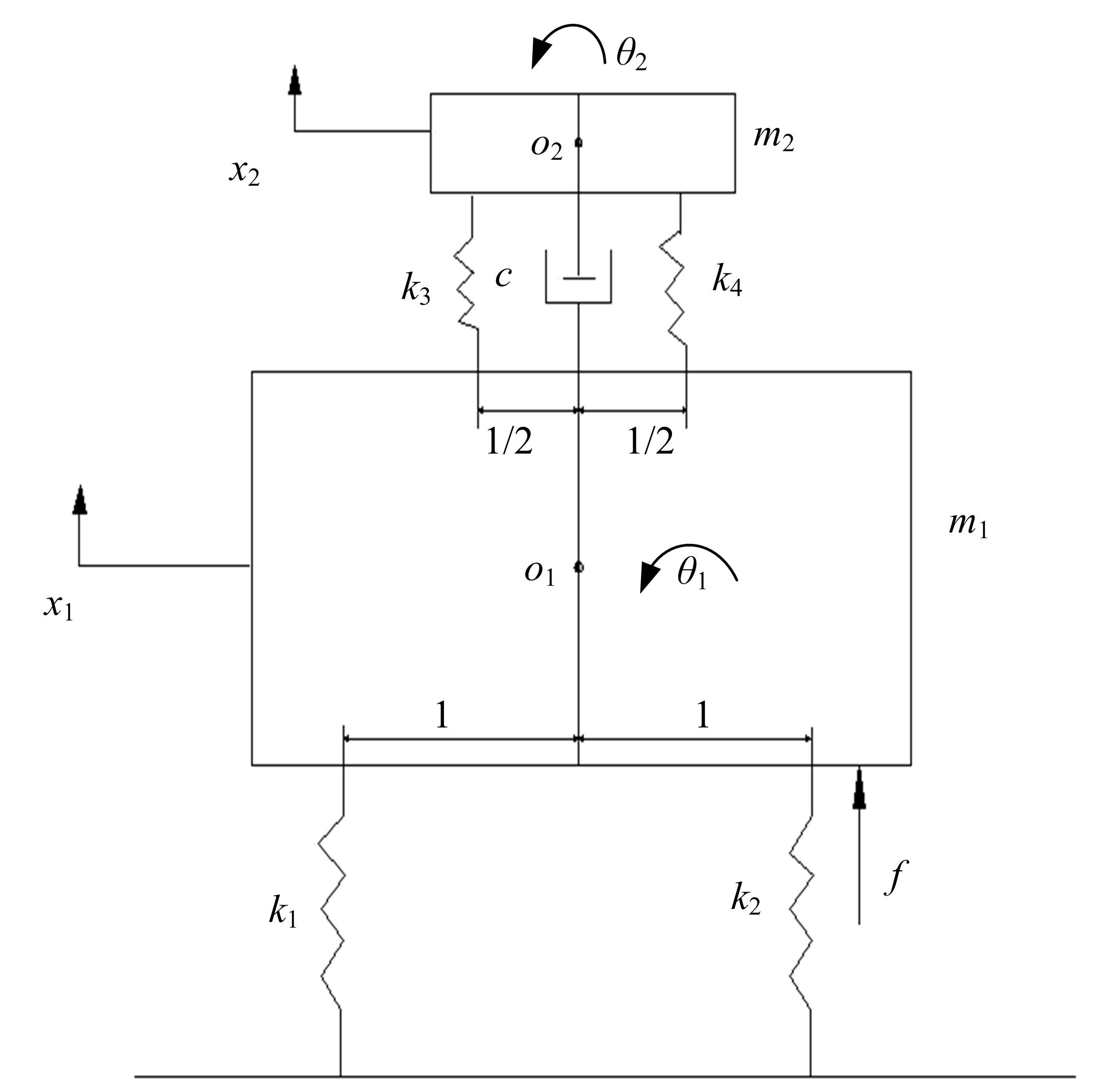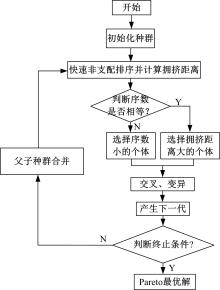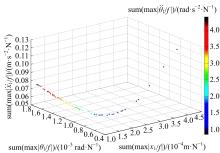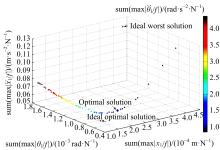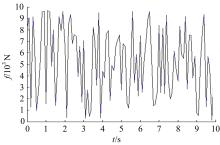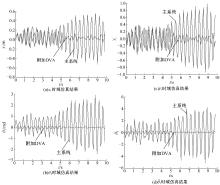吉林大学学报(工学版) ›› 2019, Vol. 49 ›› Issue (6): 1969-1976.doi: 10.13229/j.cnki.jdxbgxb20180924
基于多目标遗传算法的二自由度动力吸振器优化设计
- 1. 吉林大学 汽车仿真与控制国家重点实验室,长春 130022
2. 山东理工大学 交通与车辆工程学院,山东 淄博 255000
Optimal design of two degrees of freedom dynamic vibration absorber based on multi-objective genetic algorithm
Fu-chun JIA1( ),Xian-jie MENG2,Yu-long LEI1(
),Xian-jie MENG2,Yu-long LEI1( )
)
- 1. State Key Laboratory of Automotive Simulation and Control, Jinlin University, Changchun 130022, China
2. School of Transportation and Vehicle Engineering, Shandong University of Technology, Zibo 255000, China
摘要:
针对实际工况中常见的具有平移和绕质心转动两个自由度的无阻尼主系统,提出了一种二自由度动力吸振器,通过对吸振器刚度和阻尼的优化,使主系统获得良好的减振效果。用位移、加速度、角位移和角加速度对主系统振动进行评价并作为优化目标。采用带精英策略的非支配排序遗传算法(NSGA-Ⅱ)解决4个优化目标、3个设计变量的多目标优化问题,得到含有60个解的Pareto最优解集。用熵权TOPSIS法对Pareto最优解进行排序,选取最优解作为动力吸振器优化设计的解。对动力吸振器进行仿真分析,频域仿真结果和随机激励下的时域仿真结果表明:参数优化后的动力吸振器使得主系统的4个振动评价指标均大幅降低,二自由度动力吸振器的振动控制效果良好,NSGA-Ⅱ和熵权TOPSIS联合优化方法适用于二自由度动力吸振器的优化设计。
中图分类号:
- TH113.1
|
| [1] | 谢志江,王昆,皮阳军,吴小勇,郭映位. 新的6⁃PSS型并联机构正向运动学求解方法[J]. 吉林大学学报(工学版), 2019, 49(6): 1977-1985. |
| [2] | 曹恩国,刘坤,吉硕,孙震源,徐洪伟,骆星吉. 减重站起康复训练系统机械结构设计与优化[J]. 吉林大学学报(工学版), 2019, 49(5): 1558-1566. |
| [3] | 李俊烨,刘洋,卢慧,孟文卿,杨兆军,张心明. 基于分子动力学的磨粒微切削单晶铁数值分析[J]. 吉林大学学报(工学版), 2019, 49(5): 1567-1574. |
| [4] | 马芳武,韩露,周阳,王世英,蒲永锋. 采用聚乳酸复合材料的汽车零件多材料优化设计[J]. 吉林大学学报(工学版), 2019, 49(5): 1385-1391. |
| [5] | 王宏志,姜方达,周明月. 基于遗传粒子群优化算法的认知无线电系统功率分配[J]. 吉林大学学报(工学版), 2019, 49(4): 1363-1368. |
| [6] | 王家序,蒋倩倩,李俊阳,韩彦峰,张雷,唐挺. 双圆弧谐波传动柔轮齿形参数多目标优化设计[J]. 吉林大学学报(工学版), 2019, 49(4): 1194-1202. |
| [7] | 张艳芹,冯雅楠,孔鹏睿,于晓东,孔祥滨. 基于热油携带的静压支承油膜温度场及试验[J]. 吉林大学学报(工学版), 2019, 49(4): 1203-1211. |
| [8] | 杨成,赵永胜,刘志峰,蔡力钢. 基于多尺度理论的栓接结合部动力学建模[J]. 吉林大学学报(工学版), 2019, 49(4): 1212-1220. |
| [9] | 李欣,王丹,陈军绪,孙延朋,谷诤巍,徐虹. 手刹固定板冲压成形数值模拟[J]. 吉林大学学报(工学版), 2019, 49(4): 1258-1265. |
| [10] | 刘坤,吉硕,孙震源,徐洪伟,刘勇,赵静霞. 多功能坐站辅助型如厕轮椅机械结构设计与优化[J]. 吉林大学学报(工学版), 2019, 49(3): 872-880. |
| [11] | 王兴野,张进秋,李国强,彭志召. 惯性质量对齿轮齿条式作动器阻尼特性的影响[J]. 吉林大学学报(工学版), 2019, 49(3): 881-887. |
| [12] | 王家序,倪小康,韩彦峰,向果,肖科. 轴向往复运动下微槽轴承混合润滑数值模型[J]. 吉林大学学报(工学版), 2019, 49(3): 888-896. |
| [13] | 毕秋实,王国强,黄婷婷,毛瑞,鲁艳鹏. 基于DEM-FEM耦合的双齿辊破碎机辊齿强度分析[J]. 吉林大学学报(工学版), 2018, 48(6): 1770-1776. |
| [14] | 朱伟,王传伟,顾开荣,沈惠平,许可,汪源. 一种新型张拉整体并联机构刚度及动力学分析[J]. 吉林大学学报(工学版), 2018, 48(6): 1777-1786. |
| [15] | 吴蔚楠,崔乃刚,郭继峰,赵杨杨. 多异构无人机任务规划的分布式一体化求解方法[J]. 吉林大学学报(工学版), 2018, 48(6): 1827-1837. |
|

